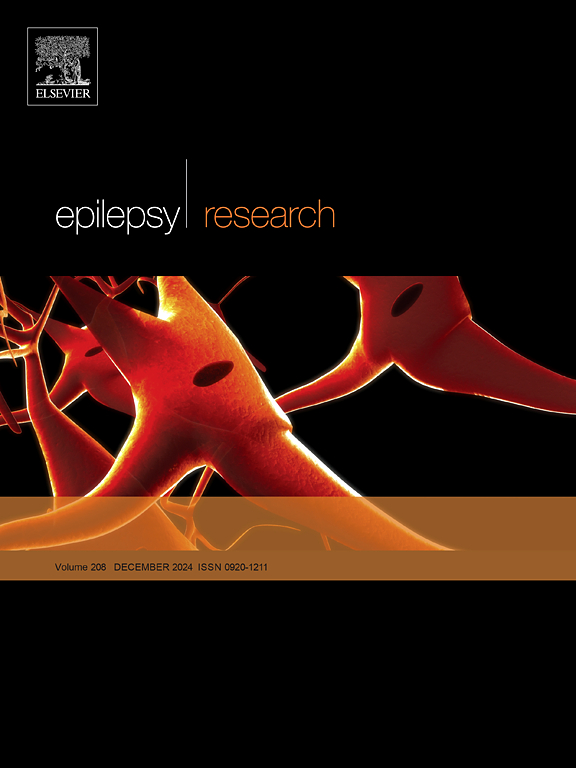大型语言模型的归纳推理:癫痫的模拟随机对照试验
IF 2
4区 医学
Q3 CLINICAL NEUROLOGY
引用次数: 0
摘要
为了研究人工智能(AI),特别是大型语言模型(llm)在抗癫痫药物模拟随机临床试验(RCT)中合成信息的潜力,cenobamate,通过医疗图表审查证明归纳推理的可行性。方法进行一项llm生成的模拟RCT,包括安慰剂组和全强度药物组,240例患者按1:1分组。使用真实的癫痫日记模拟器模拟癫痫发作计数。该研究利用法学硕士生成四种神经学家写作风格和随机无关细节的临床笔记。二级LLM管道从这些记录中合成数据。cenobamate在癫痫发作控制中的有效性和安全性通过基于llm的管道和人类阅读器进行评估。结果人工智能分析与人的分析非常接近,在识别药物疗效和报告症状方面显示了药物的疗效,差异很小(<3 %)。AI成功地识别了癫痫发作的次数、症状报告和治疗效果,并进行了统计分析,比较了安慰剂组和药物组之间的50% %应答率和中位数百分比变化,以及每个组的副作用率。本研究强调了人工智能在准确分析嘈杂的临床记录以归纳产生临床知识方面的潜力。在这里,尽管有许多干扰因素,从非结构化模拟笔记中推断出的治疗效果大小和症状频率。研究结果强调了人工智能在未来临床研究中的重要性,为传统的劳动密集型数据挖掘提供了一种可扩展且高效的替代方案。本文章由计算机程序翻译,如有差异,请以英文原文为准。
Inductive reasoning with large language models: A simulated randomized controlled trial for epilepsy
Introduction
To investigate the potential of using artificial intelligence (AI), specifically large language models (LLMs), for synthesizing information in a simulated randomized clinical trial (RCT) for an anti-seizure medication, cenobamate, demonstrating the feasibility of inductive reasoning via medical chart review.
Methods
An LLM-generated simulated RCT was conducted, featuring a placebo arm and a full-strength drug arm with a cohort of 240 patients divided 1:1. Seizure counts were simulated using a realistic seizure diary simulator. The study utilized LLMs to generate clinical notes with four neurologist writing styles and random extraneous details. A secondary LLM pipeline synthesized data from these notes. The efficacy and safety of cenobamate in seizure control were evaluated by both an LLM-based pipeline and a human reader.
Results
The AI analysis closely mirrored human analysis, demonstrating the drug's efficacy with marginal differences (<3 %) in identifying both drug efficacy and reported symptoms. The AI successfully identified the number of seizures, symptom reports, and treatment efficacy, with statistical analysis comparing the 50 %-responder rate and median percentage change between the placebo and drug arms, as well as side effect rates in each arm.
Discussion
This study highlights the potential of AI to accurately analyze noisy clinical notes to inductively produce clinical knowledge. Here, treatment effect sizes and symptom frequencies derived from unstructured simulated notes were inferred despite many distractors. The findings emphasize the relevance of AI in future clinical research, offering a scalable and efficient alternative to traditional labor-intensive data mining.
求助全文
通过发布文献求助,成功后即可免费获取论文全文。
去求助
来源期刊

Epilepsy Research
医学-临床神经学
CiteScore
0.10
自引率
4.50%
发文量
143
审稿时长
62 days
期刊介绍:
Epilepsy Research provides for publication of high quality articles in both basic and clinical epilepsy research, with a special emphasis on translational research that ultimately relates to epilepsy as a human condition. The journal is intended to provide a forum for reporting the best and most rigorous epilepsy research from all disciplines ranging from biophysics and molecular biology to epidemiological and psychosocial research. As such the journal will publish original papers relevant to epilepsy from any scientific discipline and also studies of a multidisciplinary nature. Clinical and experimental research papers adopting fresh conceptual approaches to the study of epilepsy and its treatment are encouraged. The overriding criteria for publication are novelty, significant clinical or experimental relevance, and interest to a multidisciplinary audience in the broad arena of epilepsy. Review articles focused on any topic of epilepsy research will also be considered, but only if they present an exceptionally clear synthesis of current knowledge and future directions of a research area, based on a critical assessment of the available data or on hypotheses that are likely to stimulate more critical thinking and further advances in an area of epilepsy research.
 求助内容:
求助内容: 应助结果提醒方式:
应助结果提醒方式:


